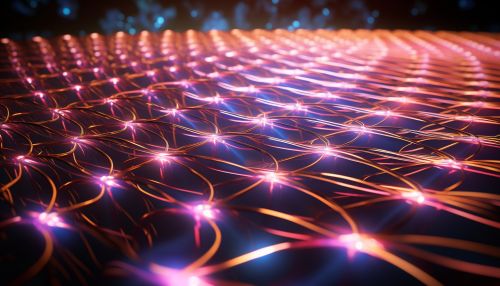Meissner Effect
Introduction
The Meissner effect, also known as the Meissner-Ochsenfeld effect, is a phenomenon observed in superconducting materials where they expel magnetic fields from their interior when transitioning to a state of superconductivity. This expulsion of magnetic fields is a defining characteristic of superconductors, distinguishing them from perfect conductors which allow magnetic fields to penetrate their interior. The Meissner effect was first discovered by German physicists Walther Meissner and Robert Ochsenfeld in 1933 1.


Discovery and History
The Meissner effect was discovered in 1933 by Walther Meissner and Robert Ochsenfeld while they were conducting experiments on the magnetic properties of superconductors. They observed that when a superconducting material is cooled below its critical temperature, it begins to expel all internal magnetic fields, a phenomenon that was later named after them 2.
Theoretical Explanation
The theoretical explanation of the Meissner effect is based on the principles of quantum mechanics and the theory of superconductivity. According to the BCS theory, superconductivity arises due to the formation of Cooper pairs, which are pairs of electrons with opposite momentum and spin. These Cooper pairs move through the lattice structure of the superconductor without scattering, leading to zero electrical resistance. When a magnetic field is applied to the superconductor, the Cooper pairs respond by creating a current that generates a magnetic field opposing the applied field, thus expelling it from the interior of the superconductor 3.


Meissner Effect and Superconductivity
The Meissner effect is a key characteristic of superconductors and is used as a test to confirm superconductivity. The expulsion of magnetic fields from the interior of a superconducting material is a direct consequence of the zero electrical resistance state of superconductors. This is in contrast to perfect conductors, which allow magnetic fields to penetrate their interior. The Meissner effect is thus a distinguishing feature of superconductors 4.
Applications
The Meissner effect has several practical applications, particularly in technologies that utilize superconductors. These include magnetic levitation trains, which use the Meissner effect to levitate above the tracks, reducing friction and allowing for high-speed travel. Other applications include superconducting magnets used in magnetic resonance imaging (MRI) machines, particle accelerators, and in the construction of quantum computers 5.


See Also
References
1. Meissner, W., & Ochsenfeld, R. (1933). Ein neuer Effekt bei Eintritt der Supraleitfähigkeit. Naturwissenschaften, 21(44), 787-788. 2. Tinkham, M. (1996). Introduction to Superconductivity. McGraw-Hill. 3. Bardeen, J., Cooper, L. N., & Schrieffer, J. R. (1957). Theory of Superconductivity. Physical Review, 108(5), 1175. 4. Waldram, J. R. (1996). Superconductivity of Metals and Cuprates. Institute of Physics Publishing. 5. Clarke, J., & Braginski, A. I. (Eds.). (2004). The SQUID Handbook: Fundamentals and Technology of SQUIDs and SQUID Systems. Wiley-VCH.
